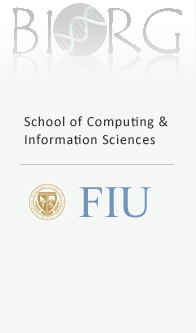Integrated Genomic & Expression Database
PseudoNEXUS is an integrated bioinformatics database storing a variety of information about five strains of the bacterium Pseudomonas aeruginosa
(PAO1, PA14, PA2192, PAC3719, and PACS2).
PseudoNEXUS contains:
- Gene Expression data (transcription modules, gene clusters, expression profiles, etc.)
- Searchable entries for all genes & gene products in these organisms
- Bioinformatics tools such as BLAST, CLUSTAL, & protein hydrophobicity
- Tools to explore orthologs
- Tools to explore paralogs
- Links from the entries to all major databases
- Advanced search capabilites
The work on this database was supported in part by an NIH/NIGMS grant S06 GM 08205.
In biology the genome of an organism is its whole hereditary information and is encoded in the DNA (or, for some viruses, RNA). This includes both the genes and the non-coding sequences of the DNA. The term was coined in 1920 by Hans Winkler, Professor of Botany at the University of Hamburg, Germany. More precisely, the genome of an organism is a complete genetic sequence on one set of chromosomes. The term genome can be applied specifically to mean that stored on a complete set of nuclear DNA (i.e., the "nuclear genome") but can also be applied to that stored within organelles that contain their own DNA, as with the mitochondrial genome or the chloroplast genome. [ wikipedia ]
Search Databases
|
• Search Tools
• Advanced Search |
|||||
Transcription Modules & Gene ExpressionIn the field of molecular biology, gene expression profiling is the measurement of the activity (the expression) of thousands of genes at once, to create a global picture of cellular function. These profiles can, for example, distinguish between cells that are actively dividing, or show how the cells react to a particular treatment. Many experiments of this sort measure an entire genome simultaneously, that is, every gene present in a particular cell. [ wikipedia ] |
Bioinformatics ToolsBioinformatics is the application of information technology to the field of molecular biology. Bioinformatics entails the creation and advancement of databases, algorithms, computational and statistical techniques, and theory to solve formal and practical problems arising from the management and analysis of biological data. Common activities in bioinformatics include mapping and analyzing DNA and protein sequences, aligning different DNA and protein sequences to compare them and creating and viewing 3-D models of protein structures. [ wikipedia ] |
Genome BrowserGenome Browsers enable researchers to visualize and browse entire genomes (most have many complete genomes) with annotated data including gene prediction and structure, proteins, expression, regulation, variation, comparative analysis, etc. Annotated data is usually from multiple diverse sources. The PseudoNEXUS Genome Browser employs advanced Web 2.0 technologies to enable fast browsing & interactivity of the genomes. [ wikipedia ] |
|


